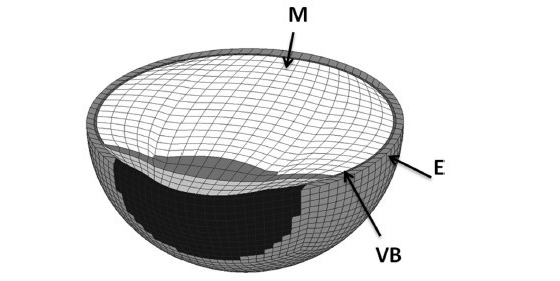原文作者: | Tommaso Rossi, Barbara Tommaso Rossi, Barbara Boccassini, etc |  |
发布时间: | 2014-08-20 | |
来 源: | Investigative Ophthalmology & Visual Science | |
下载链接: |
PURPOSE. To test the hypothesis that blunt trauma shockwave propagation may cause macular and peripheral retinal lesions, regardless of the presence of vitreous. The study was prompted by the observation of macular hole after an inadvertent BB shot in a previously vitrectomized eye.
METHODS. The computational model was generated from generic eye geometry. Numeric simulations were performed with explicit finite element code. Simple constitutive modeling for soft tissues was used, and model parameters were calibrated on available experimental data by means of a reverse-engineering approach. Pressure, strain, and strain rates were calculated in vitreous- and aqueous-filled eyes. The paired t-test was used for statistical analysis with a 0.05 significance level.
RESULTS. Pressure at the retinal surface ranged between _1 and _1.8 MPa at the macula. Vitreous-filled eyes showed significantly lower pressures at the macula during the compression phase (P _ 0.0001) and at the vitreous base during the rebound phase (P _ 0.04). Multiaxial strain reached 20% and 25% at the macula and vitreous base, whereas the strain rate reached 40,000 and 50,000 seconds_1, respectively. Both strain and strain rates at the macula, vitreous base, and equator reached lower values in the vitreous- compared with the aqueous- filled eyes (P _ 0.001). Calculated pressures, strain, and strain rate levels were several orders of magnitude higher than the retina tensile strength and load-carrying capability reported in the literature.
CONCLUSIONS. Vitreous traction may not be responsible for blunt trauma–associated retinal lesions and can actually damp shockwaves significantly. Negative pressures associated with multiaxial strain and high strain rates can tear and detach the retina. Differential retinal elasticity may explain the higher tendency toward tearing the macula and vitreous base.